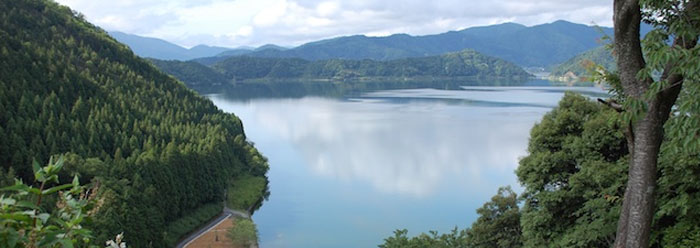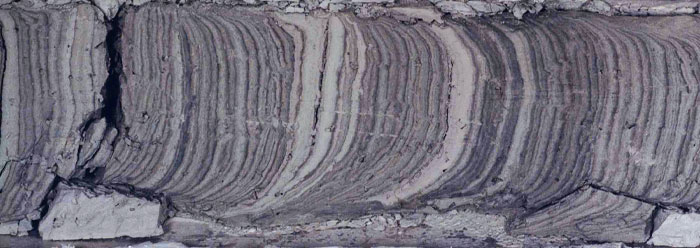Age-dating a rock using its radioactive isotopes only works by assuming that the rate at which that "clock" ticks was constant in the past and essentially identical to that in the present. Not long ago, scientists discovered excess helium in crystals1 and "orphaned" polonium radiohalos,2 both of which imply that the decay rates of isotopes commonly used to date earth rocks were dramatically accelerated in the past. Even today, researchers are finding small but significant changes in isotope decay rates, and these add credibility to the idea that isotopic processes were once very different from today's processes.
One standard isotopic clock system uses decaying uranium isotopes. Uranium spontaneously and slowly decays to lead (Pb on the Periodic Table of Elements). Two different uranium isotopes, 235U and 238U, decay into lead at different rates. Geologists assume that the ratio between these is constant and known, giving a convenient shortcut to uranium dating, which only requires that the two uranium amounts be measured.
Of course, this shortcut age-dating method assumes that 238U and 235U have decayed at today's rates throughout the past. It also assumes that the relative amounts of the two have been constant. Physics Today editor Johanna Miller recently wrote, "Standard Pb-Pb dating protocol uses a 238U/235U ratio of 137.88 with zero uncertainty. But several recent studies have cast doubt on that number."3
Miller cited one experiment that found that the uranium ratio (the heavier 238U to lighter weight 235U) is not constant. The study authors wrote, "Our observations have a direct impact on the U-series and U-Th-Pb chronometers," meaning that dates "determined" by uranium decay will need revision.4
Yet another study reported natural variation in the uranium ratio. These authors suggested that natural processes separate the isotopes from one another and skew the ratio, thereby skewing the ages gained by the assumption that the ratio was constant. These authors wrote, "The discovery that 238U/235U varies in nature also has implications for the precision and accuracy of U-Pb dating. The total observed range in U isotope compositions would produce variations in 207Pb/206Pb ages of young U-bearing minerals of up to 3 Ma [million years old], and up to 2 Ma for minerals that are 3 billion years old."5
Two to three million years are not a huge part of three billion. So, adjusting already-published dates to reflect these new and larger error margins will not displace billion-year-old age assignments. However, if today's comparatively tame natural processes affect isotope ratios, then ancient and much more violent processes could have affected those ratios and rates much more, just as the helium in crystals and orphaned radiohalos imply.
Another isotope system used for dating, though more rarely than uranium, is that which occurs when a radioactive samarium isotope decays to the element neodymium. A 2012 Science report re-measured samarium's decay rate, finding that it occurs only about 66 percent as fast as "the currently used value" for age dating.6 This is a huge discrepancy! It means that all published samarium-dated rock ages need to be re-evaluated.
In addition, Purdue University just applied for a patent on a solar flare warning system that relies on ways in which the earth-sun relationship somehow alters nuclear decay rates. Purdue News reports that "Advance warning could allow satellite and power grid operators to take steps to minimize impact and astronauts to shield themselves from potentially lethal radiation emitted during solar storms."7 Their invention would rely on detecting changes in the rate of manganese 54 decaying to chromium 54. Researchers observed the decay rate changes occurring about a day prior to solar flares.
Even carbon dating is in hot water. Scientists typically use this method to age-date carbon-containing objects thought to be only tens of thousands of years old. The relevant radioactive carbon isotope (14C) decays so fast that it should no longer exist in earth materials that are a million or more years old.8 Recently, researchers measured elevated levels of 14C in correlated tree rings and attributed the spike to an unidentified "massive cosmic event."9 If natural processes did alter carbon isotope ratios, then why trust dates that assume the ratios were never altered?
Science shows that isotopic clocks are not all trustworthy.10 The isotope ratios and rates upon which they depend are variable, even on today's comparatively calm earth surface. During the tumultuous Flood, when immeasurable quantities of mantle material were ejected onto earth's surface and water potentially contaminated everything, isotopic clocks ticked much, much faster.11
References
- Humphreys, D.R. 2005. Young Helium Diffusion Age of Zircons Supports Accelerated Nuclear Decay. In Radioisotopes and the Age of the Earth: Results of a Young-Earth Creationist Research Initiative, Vol. 2. Vardiman, L. et al., eds. El Cajon, CA: Institute for Creation Research and Chino Valley, AZ: Creation Research Society.
- Gentry, R.V. 1974. Radiohalos in a Radiochronological and Cosmolocial Perspective. Science. 184 (4132): 62-66.
- Miller, J. 2012. Time to reset isotopic clocks? Physics Today. 65 (6): 20-21.
- Stirling, C.H. et al. 2007. Low-temperature isotopic fractionation of uranium. Earth and Planetary Science Letters. 264 (1): 208-225.
- Weyer, S. et al. 2008. Natural fractionation of 238U/235U. Geochimica et Cosmochimica Acta. 72 (2): 345-359.
- Kinoshita, N. et al. 2012. A Shorter 146Sm Half-Life Measured and Implications for 146Sm-142Nd Chronology in the Solar System. Science. 335 (6076): 1614-1617.
-
Venere, E. New system could predict solar flares, give advance warning. Purdue News. Posted on purdue.edu, August 13, 2012.
-
Despite this, 90 instances of C-14 in supposedly million-year-old earth materials were reviewed and 10 more were presented in Baumgardner, J.R. et al. 2003. Measurable 14C in Fossilized Organic Materials: Confirming the Young Earth Creation-Flood Model. In Proceedings of the Fifth International Conference on Creationism. R.L. Ivey, ed. Pittsburgh, PA: Creation Science Fellowship, Inc., 127-142.
- Lovett, R. A. Mysterious radiation burst recorded in tree rings. Nature news. Posted on nature.com June 3, 2012, accessed August 10, 2012.
- Austin, S.A. 2005. Do Radioisotope Clocks Need Repair? Testing the Assumptions of Isochron Dating Using K-Ar, Rb-Sr, Sm-Nd, and Pb-Pb Isotopes. In Radioisotopes and the Age of the Earth: Results of a Young-Earth Creationist Research Initiative, Vol. 2.Vardiman, L.et al., eds. El Cajon, CA: Institute for Creation Research and Chino Valley, AZ: Creation Research Society.
- When heated to plasma, bare nuclei of rhenium radioisotopes decay a billion times faster than normal. See Bosch, F. et al. 1996. Observation of Bound-State β- Decay of Fully Ionized 187Re: 187Re- 187Os Cosmochronometry. Physical Review Letters. 77 (26): 5190-5193.
* Mr. Thomas is Science Writer at the Institute for Creation Research.
Article posted on August 17, 2012.

























